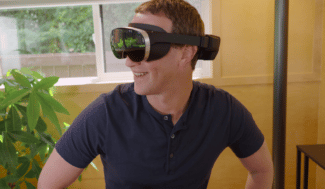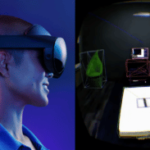Meta says it’s “developing high-density displays and high-resolution optical systems in tandem to achieve retinal resolution on our product roadmap”.
Angular resolution is the true measure of the resolution of a head-mounted display because it describes how many pixels you actually see in each degree of your vision – the pixels per degree (PPD). It accounts for differences in field of view between headsets. For example, if two headsets use the same display but one has a field of view twice as wide, it would have the same resolution yet just half the PPD.
‘Retinal’ is a term used to describe angular resolution exceeding what the human eye can discern. The generally accepted threshold is 60 PPD.
No consumer VR headset today comes close to this – Quest Pro reaches around 22 pixels per degree, while the $1990 Varjo Aero reaches 35 pixels per degree. Varjo’s $5500 business-focused headsets actually surpass retinal resolution, but only in a tiny area in the center of your view.

In June Meta showed off a research prototype achieving 55 PDD called Butterscotch. But Butterscotch had a very narrow field of view and is heavy and bulky. Its stated purpose was to demonstrate and research the feeling of retinal resolution, not to be a path to a practical product.
Last month South Korean news outlet SBS Biz reported Meta executives held private meetings with Samsung and LG’s display divisions about supplying OLED and MicroLED microdisplays for future VR and AR devices. Microdisplays have significantly higher pixel densities and thus can enable higher resolution headsets without sacrificing compactness.





